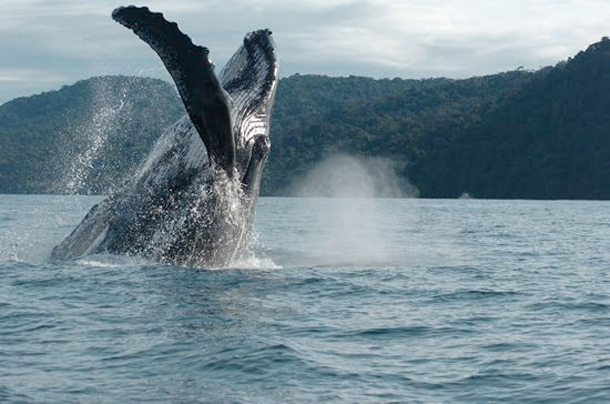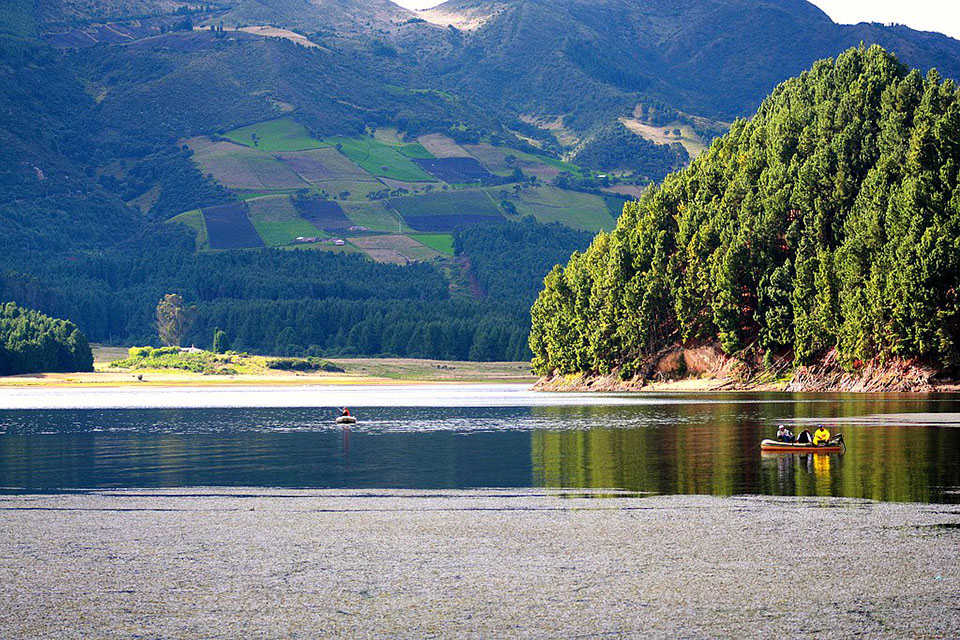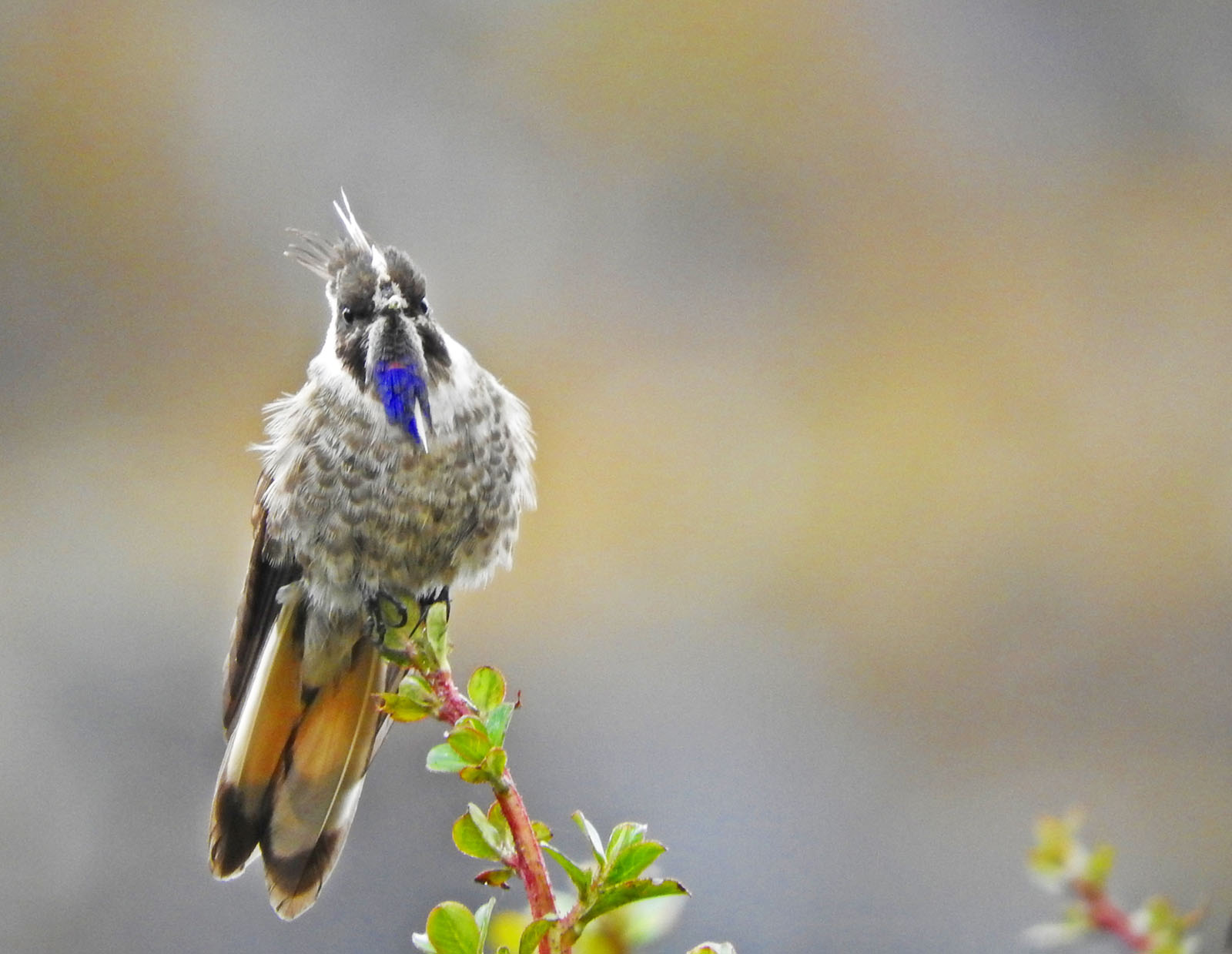
The star of the show: The blue-bearded helmetcrest. Photos: Chris Bell
The blue-bearded helmetcrest has returned from supposed extinction and is now teetering on the edge. Our intrepid columnist is one of the few people alive to have seen it.
In 1946, Melbourne Armstrong Carriker, Jr. shot a little hummingbird on the high páramo of the Sierra Nevada de Santa Marta. Carriker, one of the outstanding Neotropical collectors and explorers of his generation, was not to know that the bird he had just collected – a handsome bundle of green and beige feathers known as a blue-bearded helmetcrest, or Oxypogon cyanolaemus – would not be recorded again for another 69 years. The helmetcrest was presumed extinct for decades.
Fast-forward to 2015, and an unusual little bird alighted on a branch on the same páramo, not far from Carlos Julio Rojas. He fired off a quick couple of shots – very different shots to Carriker’s two generations earlier – and upon checking the camera screen his jaw dropped in amazement. It was a male blue-bearded helmetcrest. Finally, after several previous expeditions had failed to discover any signs of the lost species, the bird was back from the dead.
In a country like Colombia, it’s not entirely unusual for a species to disappear off the face of the earth, only to be found again, still clinging on in some forgotten patch of jungle or mountain redoubt. Decades of bloody conflict have left many regions of the country practically off-limits to outside visitors, and at least a handful of “missing, presumed extinct” species have been rediscovered in Colombia this century. The blue-bearded helmetcrest, however, has an unusual story.
Very little is known about this high-altitude hummingbird, a species once poetically described by ornithologist and legendary bird artist John Gould: “Although not remarkable for brilliancy of colour, their fantastic markings, towering crests, and lengthened beards render them very conspicuous objects.”
The discovery of the helmetcrest, with its punky little mohawk and startlingly bright violet-blue beard, is officially attributed to F.A.A. Simons who collected several specimens during his expedition in the Sierra Nevada de Santa Marta in 1879. Even at the time collectors noted its scarcity, and the forbidding and isolated moors on which it dwelt meant that only 62 specimens were ever collected. The last of these was contributed by Carriker in 1946, after which the bird fell off the scientific radar until Carlos Julio Rojas’s hurried snapshots in 2015.
In the meantime the helmetcrest gave every indication that it had disappeared for good. I found one clear reference to the bird in the 1965 book The Cocaine Eaters, in which English travellers Brian Moser and Donald Taylor made an attempt to scale the snowcapped peaks of the Sierra Nevada. At one point during their time in “the barren, silent world of rock wastes, precipitous gullies, glacial valley bottoms and sphagnum swamps” they casually note the presence of “a tiny crested humming bird [sic] which hovered among the frailejones.” The location and the description of the bird – quite unique within its range – give every indication that they had, unwittingly, just become the first people to spot a helmetcrest in almost 20 years.
The indigenous peoples of the Sierra Nevada – who consider the páramos, peaks, and glacial lakes of the high mountains to be sacred and make regular pilgrimages there – had almost certainly come across the helmetcrest before as well. However, to all intents and (scientific) purposes, by the time I arrived in Colombia in 2014, the helmetcrest had, like Monty Python’s Norwegian Blue, kicked the bucket, shuffled off this mortal coil. When my eyes lingered longingly over the watercolour drawing of it in my Field Guide to the Birds of Colombia, I was gazing at an ex-hummingbird…
In 2017, fresh from a spate of birding expeditions which had left me on the brink of 1,000 species seen in Colombia, I resolved to finally see the blue-bearded helmetcrest with my own eyes. In the three years since I had moved to Colombia, the bird had gone from a lost, bearded ghost to flesh, blood, and feathers once more, and seeing it was no longer a hopeless dream but an achievable reality. I contacted a guide in Santa Marta who was among the first people to see the species since its rediscovery, and set a plan into motion for January 2018.
Finally, a few days after my 30th birthday, I slowly tramped out of the small mountain town of San Pedro, perched on a ridge in the western foothills of the Sierra Nevada. My final destination – three sacred glacial lakes around which the helmetcrest supposedly lived – was 25km away, more than 2,000 metres higher up, and would take me two days to reach. I was nervous about the distance but the sun was shining, the air was clear and vivid, and my boots felt good on my feet.
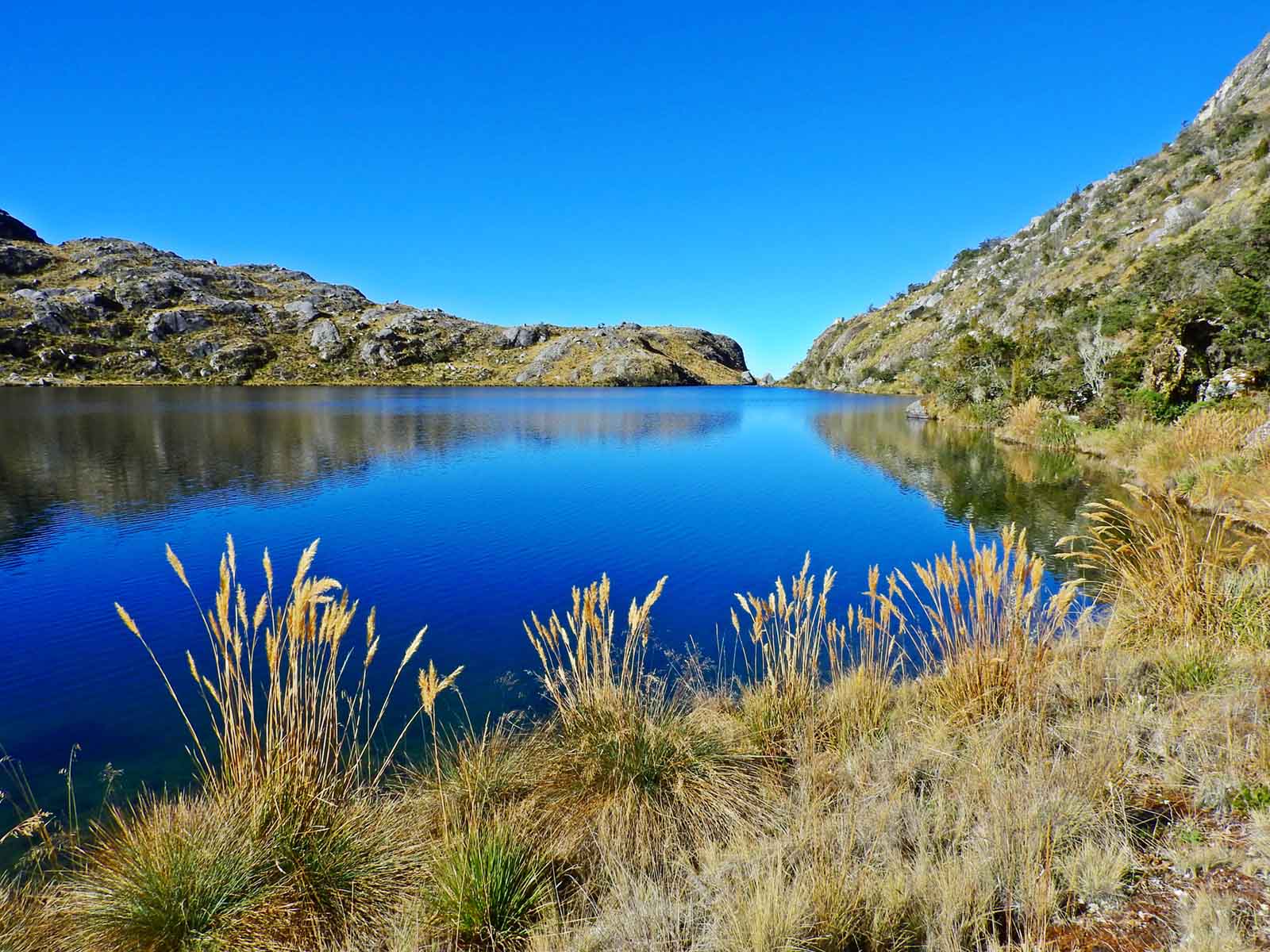
The hidden bastion of the helmetcrest.
Luckily my apprehensions about the hike were ill-founded: the weather held and we enjoyed (relatively) rain-free days and cool, clear nights. The landscapes were ever-changing and beautiful as we gradually rose up through different climatic zones and by the time we arrived in the ghostly silence of the páramo on the second afternoon I was feeling quietly confident that the time and expense was not going to be in vain. That’s when the rain swept in, and we spent the next few hours winding in soaked silence through the desolation before a little grey lake finally appeared out of the mist – at last that we had arrived in the home of the helmetcrest.
Related: Off the beaten track, running into guerrilas in the Caquetá mist
The stakeout for the hummingbird was over a ridge beside a second lake, and we hustled up the precipitous incline at double-speed the following morning, eager to commence the search. I needn’t have worried. As we skirted the swampy edges of the shimmering lagoon, a fluffy little bird landed on an orange flower just feet away and when it turned its head the sunlight revealed a flash of blue that could only mean one thing. I raised my binoculars and savoured the remarkable view of a bird that maybe 30 living people have ever knowingly seen: the blue-bearded helmetcrest.
Over the next two days we observed several different family groups of helmetcrests and managed to record some of the best photos, videos, and audio recordings that exist of this little-known species. We did so in a magical place which few eyes have ever gazed upon, as colossal walls of shattered rock reflected in the deep-blue waters of the lakes and condors sliced through the crisp air on giant wings. The hummingbird couldn’t have picked a more beautiful place from which to mount its final resistance.
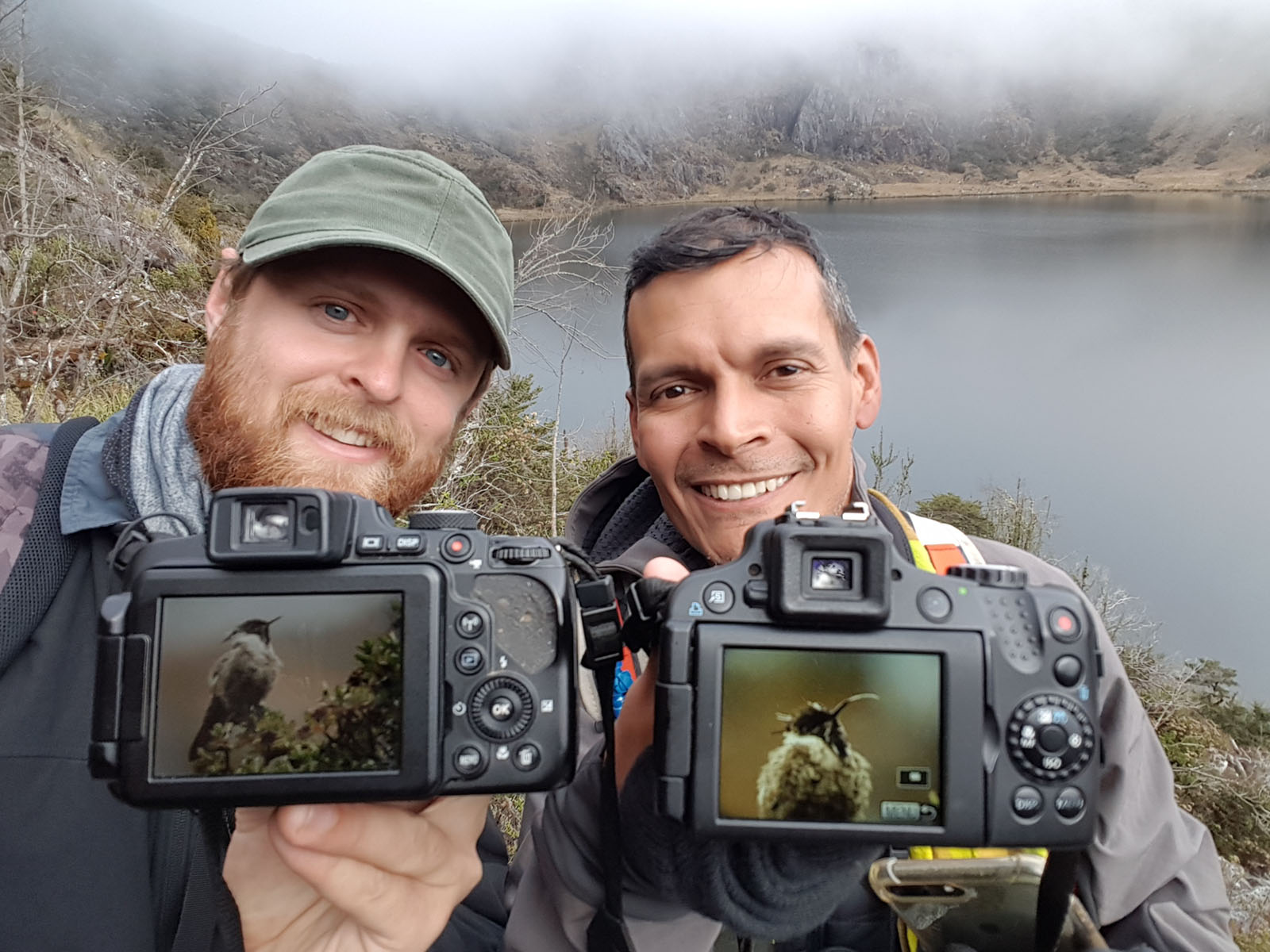
Captured for posterity: images from two of the few people to have ever seen the rare hummingbird.
And a final resistance it is – I may never see another blue-bearded helmetcrest, and the hardy little hummingbird might have returned from the dead only to find itself doomed once again by habitat loss and climate change. It is estimated that as few as 50 remain and the species is classified as ‘critically endangered’ – although if the number of young birds we saw is any indication, the helmetcrest isn’t licked just yet.
Related: Travel of the beaten track: Stuck in the middle, Mitú
It’s a bittersweet feeling to fulfil a dream whilst knowing that you might be one of the last to do so. But regardless of what chapter comes next in the blue-bearded helmetcrest’s peculiar little saga, I will always remember that glittering flash of blue in the morning light and be grateful for my small part in the story.
Chris Bell is a freelance writer who has travelled to all of Colombia’s 32 departments. You can follow his off-the-beaten-track Colombian adventures on Facebook @ChrisBellTravel and Instagram @ChrisBellColombia.


